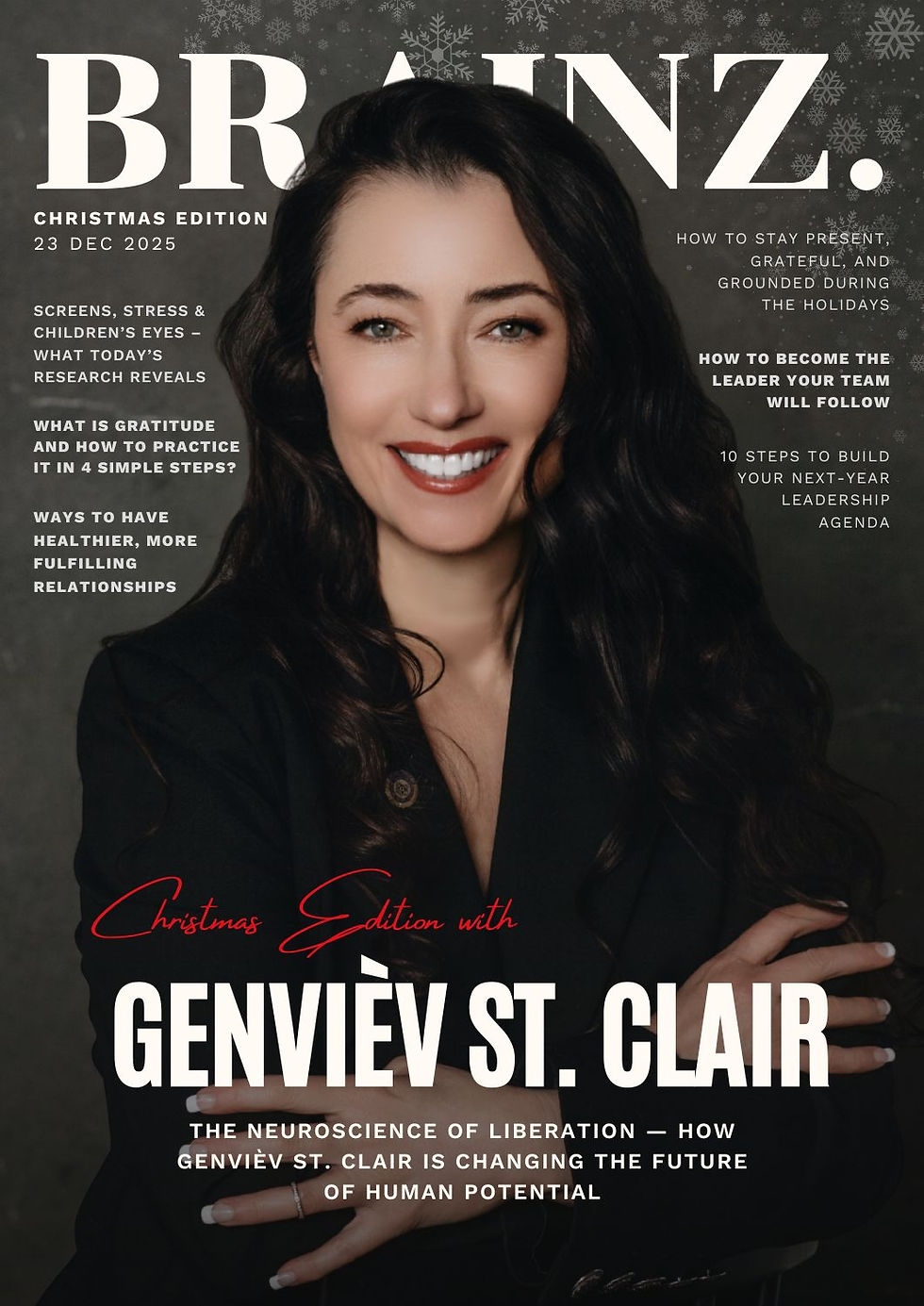The Missing Metric in M&A – Why Human Capital Defines the Real Value of a Deal
- Brainz Magazine

- Nov 6
- 4 min read
Written by Jenna Bayuk, Purpose-Driven Problem Solver
Jenna is a strategic growth partner and the founder of Kinship Kollective, a company specializing in customized fractional support for entrepreneurs and venture-backed firms, helping them scale with clarity, alignment, and operational excellence.

In every merger or acquisition, financial models, operational synergies, and market entry strategies dominate the agenda. Yet, the most powerful lever for long-term value creation is not in the spreadsheet, it is people. As growth becomes increasingly driven by capabilities, culture, and agility (especially in the age of AI), the human capital side of a deal is no longer a “nice to have” but a strategic imperative.

At Kinship Kollective, we believe the real risk in most M&A transactions is not the deal price, it is the missing metric of human alignment. We help organizations fill that gap.
1. The overlooked variable in M&A success
Studies indicate that a disturbing proportion of M&A transactions, estimates range from 70 percent to 90 percent, fail to deliver anticipated value. One of the top causes is people issues, from misaligned culture to key talent attrition. For example, according to Deloitte, almost 30 percent of failed M&As cite cultural integration issues as a root cause. When a deal is announced, attention shifts to cost synergies and revenue growth, but the human operating system begins to crack. Without clarity on motivations, alignment on values, and meaningful engagement of talent, an acquisition can quietly erode from within.
That is why it is time to reframe success metrics. It is not just what is acquired, but who stays, why they stay, and how they grow.
2. Evaluating team and culture: The intangible growth drivers
Few deal teams give human capital the same rigor as financial due diligence. Yet modern research shows that culture and people are measurable and critically linked to outcomes.
From a strategic growth lens, human capital evaluation in an M&A must address:
Capabilities: What leadership, technical, and growth mindset capabilities exist today? Which ones will be needed post-deal?
Motivation and retention: Do key personnel have clarity of role, visibility into the future organization, and willingness to stay?
Culture fit and adaptability: Are there underlying values, behaviours, and decision-making norms that align (or misalign) across organizations?
Future-ready talent architecture: Especially in the current wave of AI, it is not enough to retain today’s team, it is about building the capacity to learn, pivot, and repurpose.
3. Transparency: The currency of trust during transition
Change creates uncertainty. When employees wonder if their role will exist, whether they will belong in the new structure, or if their future aligns with the acquirer’s vision, the fallout can be significant. Transparency during a deal serves three critical purposes:
Mitigates attrition risk. Key talent often leaves not due to compensation offers, but because they do not see alignment with leadership, purpose, or growth.
Accelerates integration and activation. Clear communication of purpose, structure, and timing helps team members engage, collaborate, and deliver faster.
Signals value orientation beyond cost cuts. When an acquiring organization opts to invest in people, it sends a message of growth orientation, not simply cost rationalization.
4. The AI paradox: Why human management becomes the real differentiator
In the current landscape, the M&A agenda has been co-opted by artificial intelligence, digital platforms, and technology-driven growth. But technology does not deliver itself, the value lies in how human capital is cultivated to apply, adapt to, and innovate with these tools.
While AI may power the next wave of productivity and innovation, the real differentiator will be how intentionally we identify, train, repurpose, and lead talent through change.
5. Kinship’s perspective: Solving the missing piece
At Kinship, we have identified this recurring blind spot across transactions. People and culture are analysed too late, at too shallow a level, and without intentional design of future-fit growth engines. We help organizations plug that gap by:
Conducting pre-deal human capital audits.
Designing integration first people roadmaps.
Facilitating transparent people-led communications.
Embedding talent growth architecture linking deal logic with learning and capability design.
6. Call to action
If your firm or portfolio company is preparing for a transaction, now is the time to look beyond the numbers. Ask yourself:
Have we mapped the motivations, aspirations, and retention risks of the people who matter most?
Have we evaluated culture, values, leadership capability, and growth mindset alongside operational and financial due diligence?
Is transparency built into our integration plan, not just day one messaging but ongoing team engagement and capability development?
Are we designing a talent investment architecture that aligns with our deal logic and future growth priorities?
At Kinship, we are passionate about bringing the human dimension into focus, ensuring the missing metric becomes the secret weapon.
Connect with us today to explore how we support talent, culture, and growth in your next deal.
Read more from Jenna Bayuk
Jenna Bayuk, Purpose-Driven Problem Solver
Jenna Bayuk is the founder of Kinship Kollective, a strategic consultancy delivering customized fractional support to entrepreneurs and venture-backed companies—helping them scale with clarity, operational excellence, and growth with heart through a people-focused lens.
Sources:










.jpg)